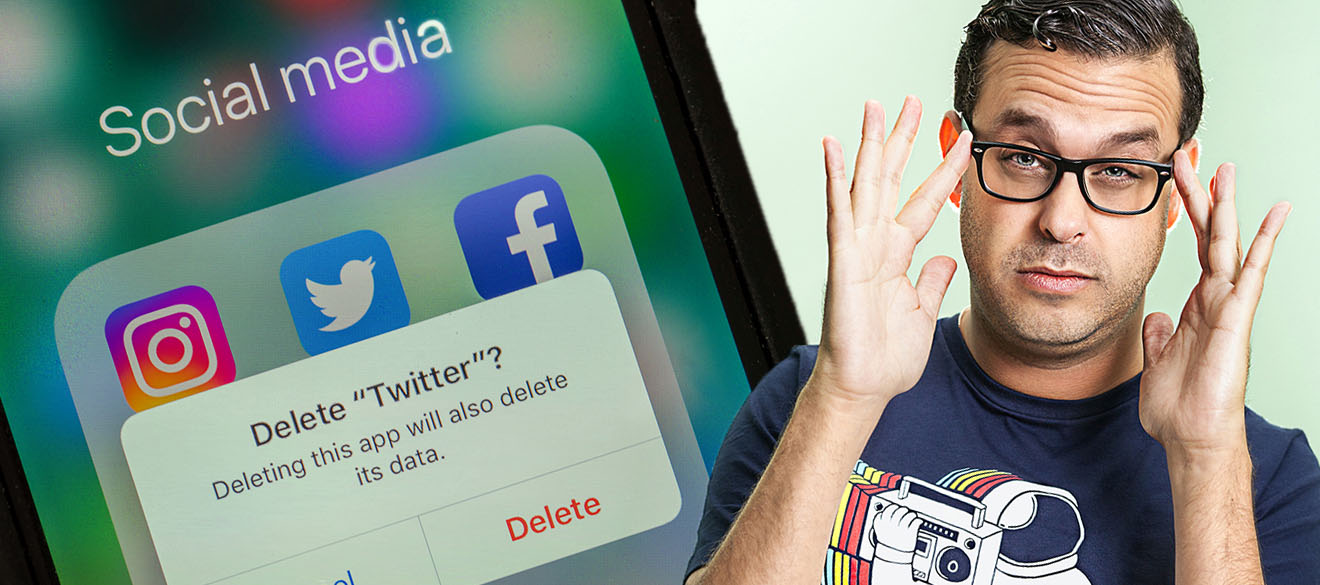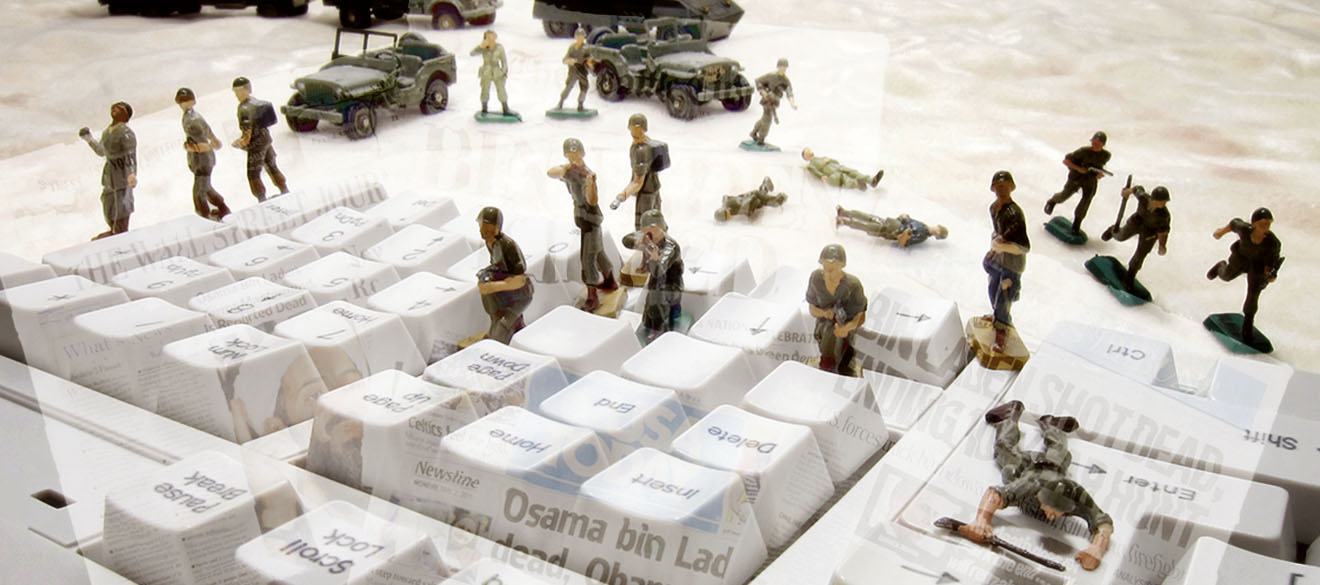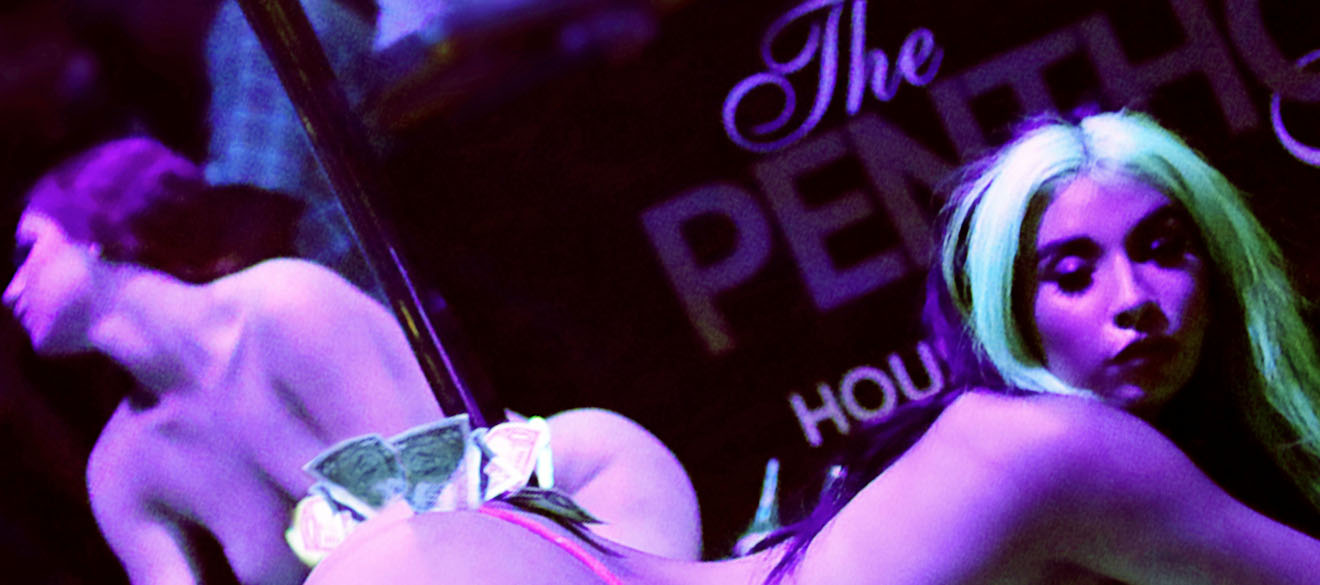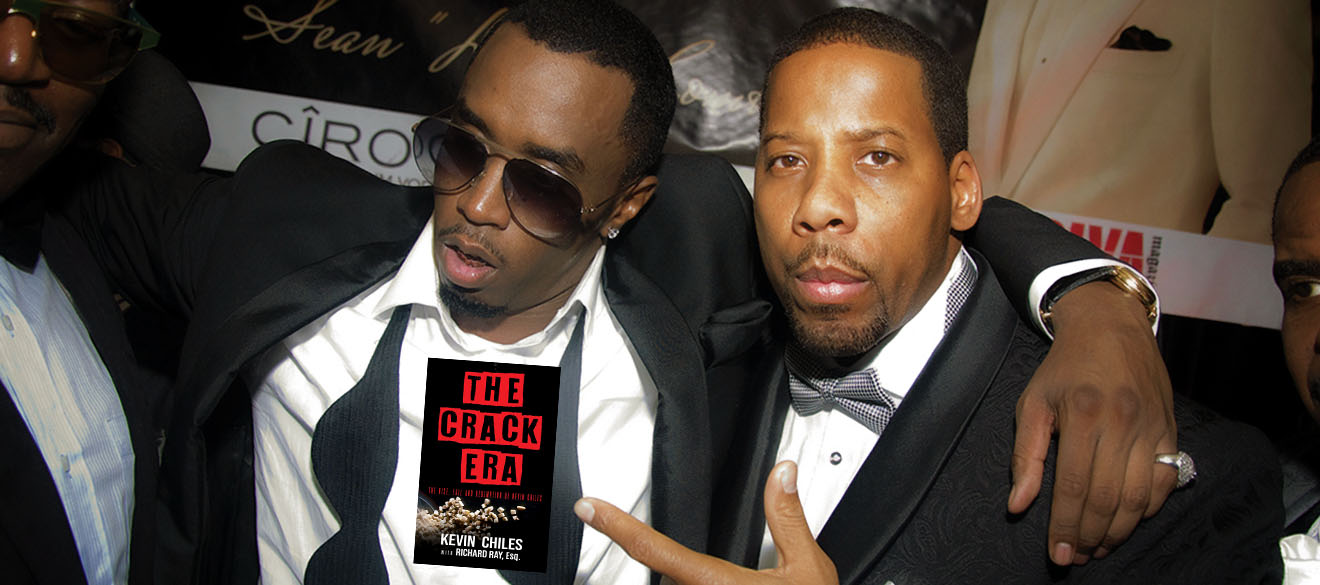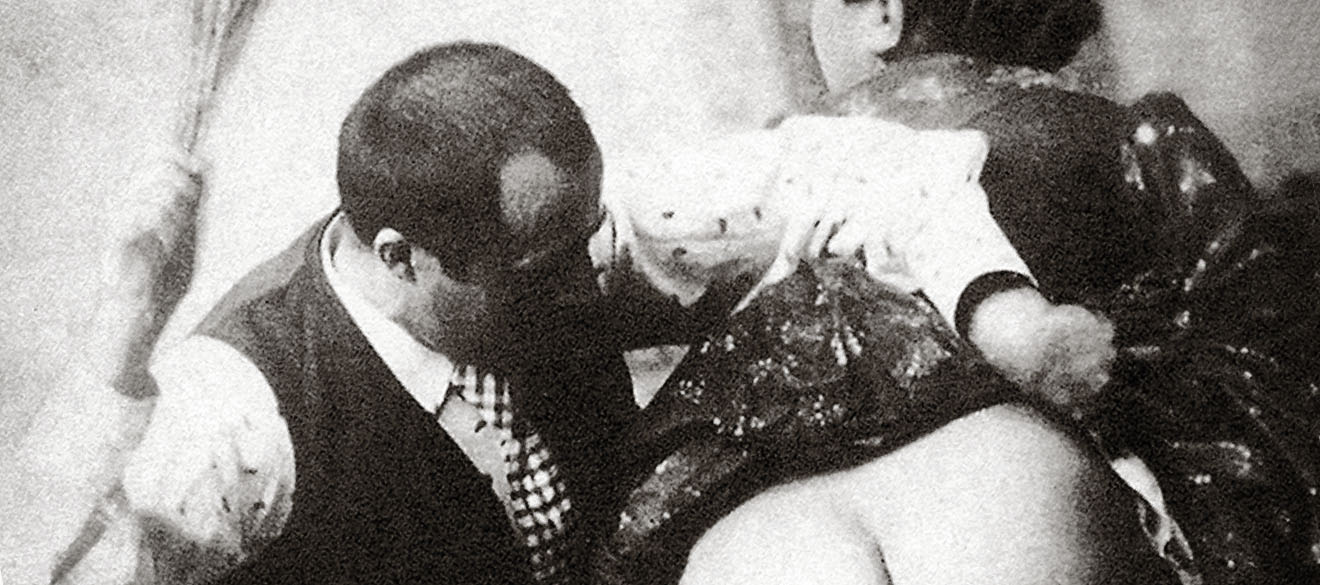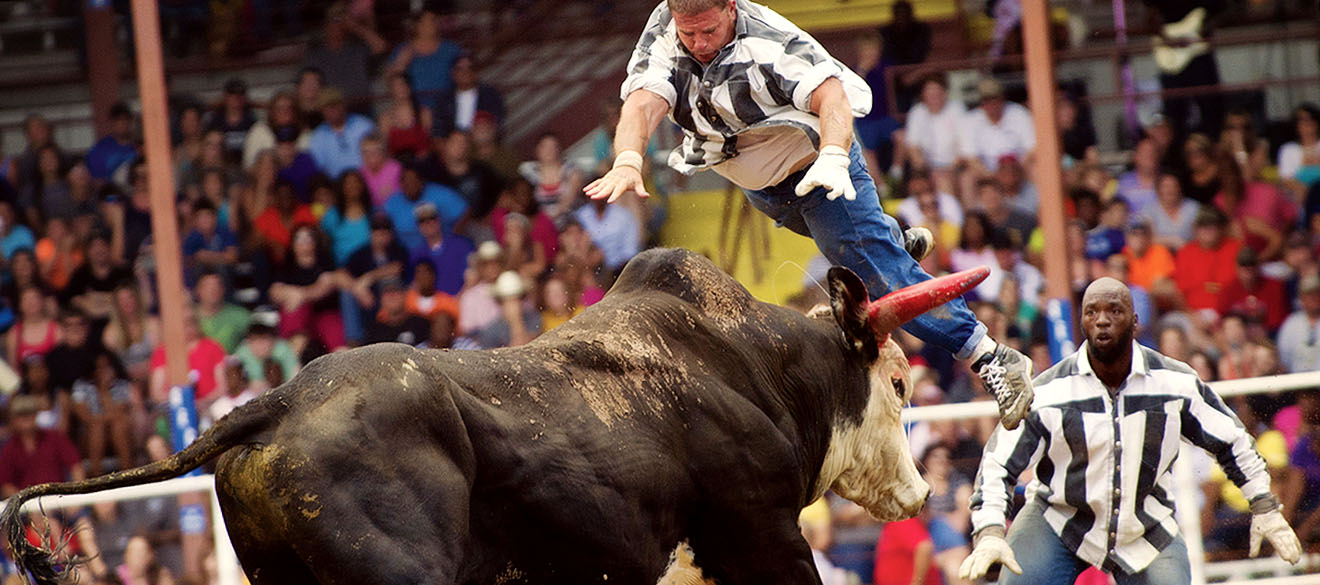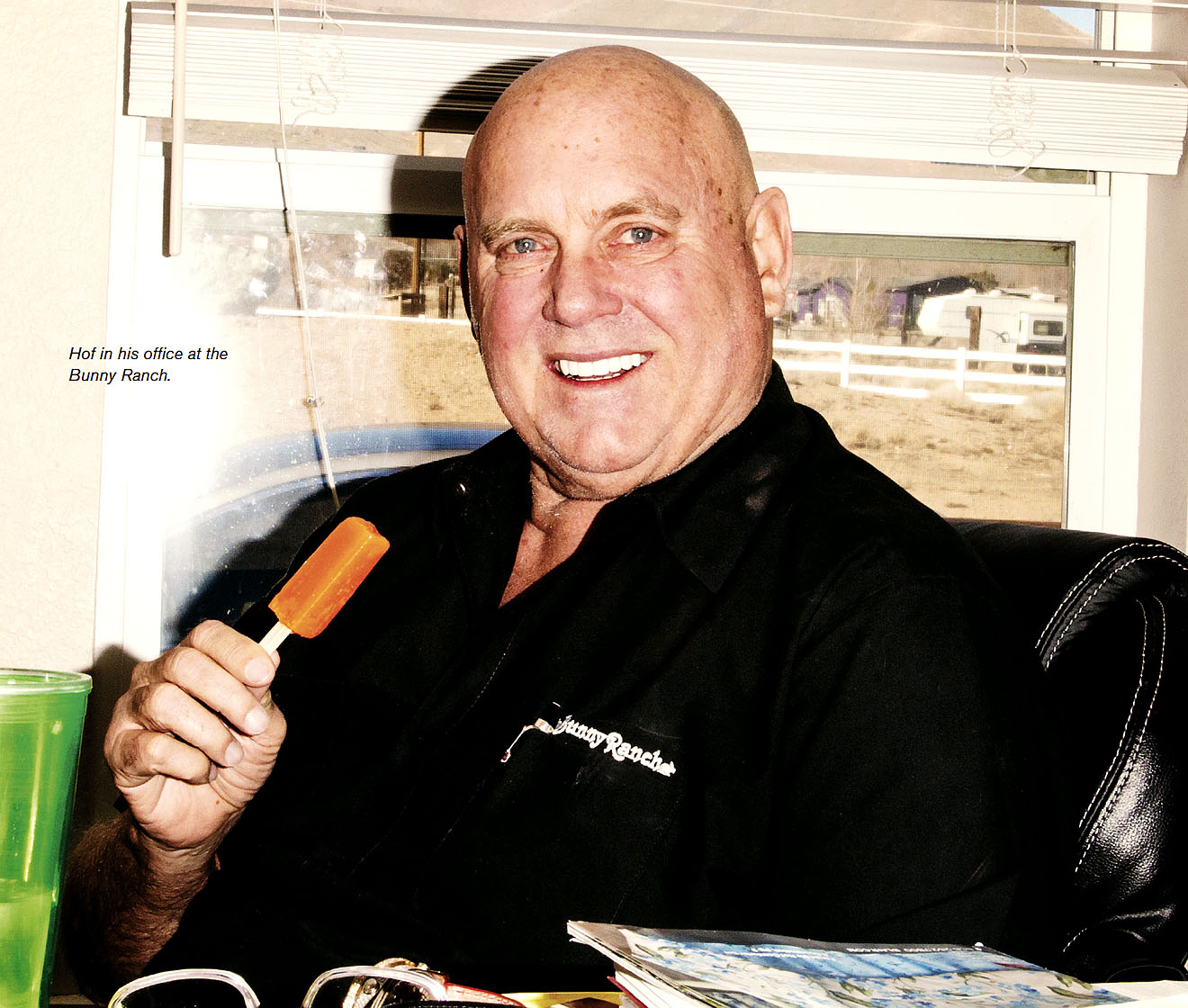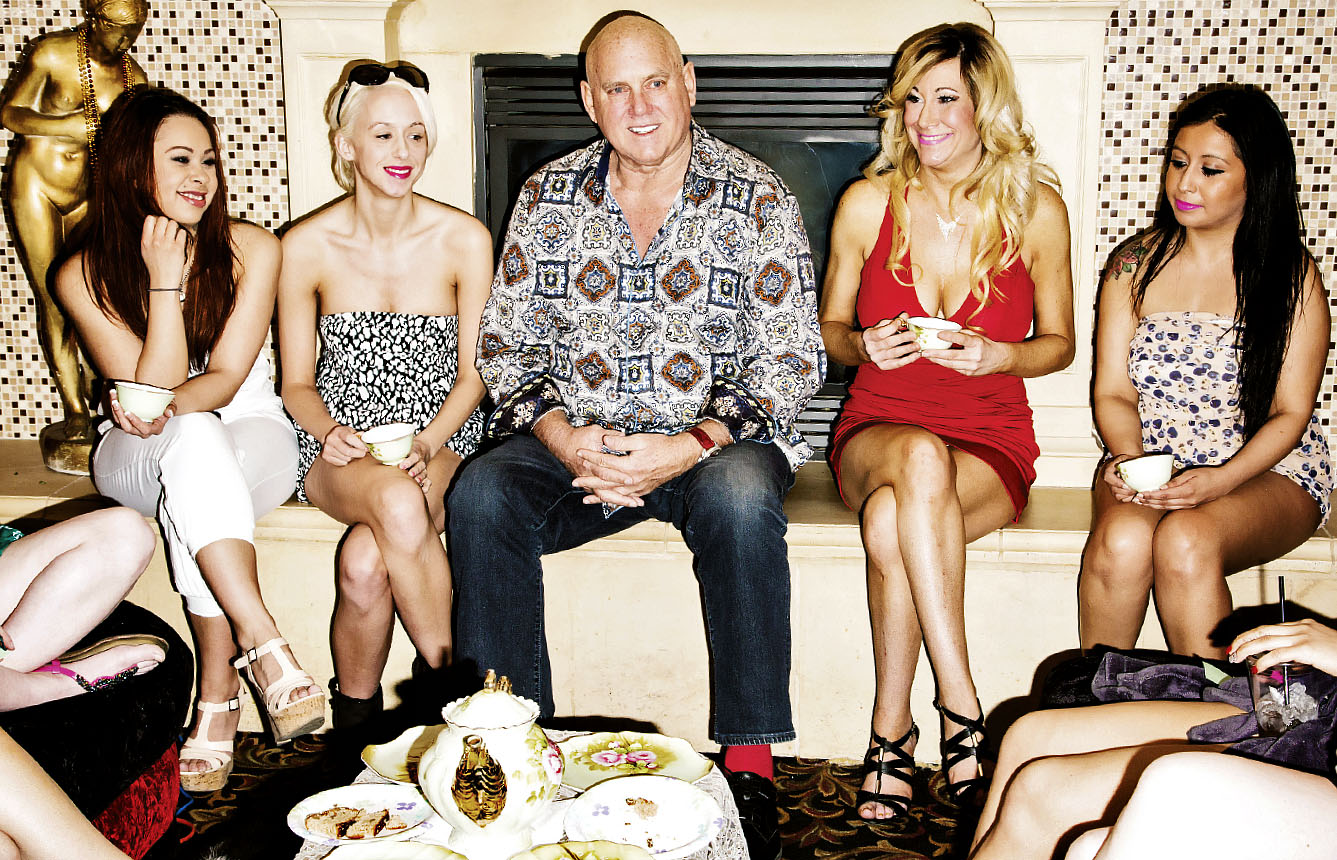This past June, an odd hashtag shot to No. 1 on Twitter and YouTube trending tabs. #VoxAdpocalypse, it read. Circulated by conservatives and libertarians, along with some less politically driven social media users wary of internet policing, the tag referenced a demonetization controversy on Google-owned YouTube. Demonetization — meant to modify a user’s behavior and keep the platform advertiser-friendly — is when the company removes ad-placement capability on a channel, denying its creator a share of ad revenue.
In this case, the #VoxAdpocalypse firestorm began when YouTube demonetized the channel of conservative comic and former Fox News contributor Steven Crowder, host of Louder With Crowder, for repeated mocking and insulting of a Vox Media journalist, Carlos Maza, in ways the company judged offensive enough to violate its terms of service.
The hashtag got a boost from Crowder himself, whose YouTube show reached well over three and a half million people, and whose Twitter account had 900K followers. Its rise was also helped by figures like Texas senator Ted Cruz, who posted two tweets sharply critical of the video-hosting platform on June 6, the day the hashtag blew up. That same day, the popular podcaster, columnist, and Daily Wire founder Ben Shapiro also issued angry tweets and on-air comments regarding the Crowder demonetization.
Crowder’s channel wasn’t the only one to get demonetized, which meant other channel creators, and their followers, took to social media to express dismay and criticize the company. Under attack from the left for the way it was handling channels trafficking in hate speech, bigotry, incitement, and extremist recruitment, YouTube had decided to more vigorously enforce its community guidelines. Demonetizing a significant number of channels (we don’t know the exact number) was one of the steps it took that early-June week.
Unsurprisingly, there were some implementation glitches. These missteps led to more outcries on social media, and more propellant for the hashtag. For example, a history teacher’s channel got mistakenly demonetized because his content included archival video of Hitler’s speeches, and keywords in its descriptive text created pings in YouTube’s algorithmic dragnet. Sweeping its platform for possible neo-Nazi content, the company had flagged the educational site as pro-Hitler. Alerted, YouTube restored monetization.
The scale of the ad-removal operation accounts for the hashtag’s doomsday pun. But the fact that #VoxAdpocalypse remained at the top of trending tabs throughout June 6, and stayed trending for days, speaks to the way the controversy intersected with matters of weighty cultural and political consequence: the power of Big Tech, online freedom, the role of the media, media fairness, the reach of digital advertising, and the ongoing conflict between political correctness and conservatism. In no way dampening the furor, some of those who used the hashtag in social media posts argued that free speech was at issue, too, and deployed language like “censorship,” “Big Brother,” and even “Stalinism.”
Senator Cruz himself raised the specter of censorship in a tweet sent to his 3.3M followers. Without getting into the nuances of how far this term actually applied in the Crowder case, which involved not government suppression of political speech, but rather a private company enforcing its policies, the Harvard Law grad referenced a notorious English court synonymous with secrecy, abuse of power, and lack of due process in a post retweeted 12.5M times: “YouTube is not the Star Chamber — stop playing God & silencing those voices you disagree with. This will not end well.”
Cruz’s tweet had a hashtag, too: #LouderWithCrowder.
The #VoxAdpocalypse brouhaha became a flashpoint for conservatives worried about social media platforms taking steps that might impact the reach of conservative online messaging, organizing, and voter outreach going into the 2020 elections and beyond. Crowder, they argued, was a casualty of political correctness gone wild, a victim of left-wing mob hysteria, and a clear illustration of a Big Tech bias against conservatives.
Cruz himself accused YouTube of a double standard, suggesting, with references to progressive comedians Samantha Bee and Jim Carrey, that the company treated media personalities on the left one way, and right-leaning figures another. As Cruz framed it, line-crossing liberal comics faced no consequences, but a conservative comic like Crowder got punished. In a June 6 tweet that outperformed even his Star Chamber post, racking up 15M retweets, the 2016 presidential hopeful tweeted, “This is nuts. YouTube needs to explain why [Crowder] is banned, but [Bee] (“Ivanka is a feckless c***.”) & [Carrey] (“look at my pretty picture of Gov. Kay Ivey being murdered in the womb”) aren’t.
No coherent standard explains it. Here’s an idea: DON’T BLACKLIST ANYBODY.”
Replies to the senator’s tweet pointed out that Crowder hadn’t been banned or blacklisted, but Cruz had made his point, and in a fiery way that works well on social media.
FOR all the online thunder and lightning, and the high-stakes issues raised by the controversy, #VoxAdpocalypse got its start in a situation no bigger than a mostly verbal conflict between two people, the battle waged via YouTube and Twitter, and featured schoolyard-style name-calling and mocking delivered by one of the participants. It began, that is, with one online political media figure deciding to get personal — very personal — about another online political media figure on the opposite side of the ideological divide.
The conservative combatant — Crowder — is better known, with a wider audience, than his counterpart, Maza.
Detroit-born, 32 years old, Crowder was raised in Montreal by born-again Christian parents and practiced sexual abstinence until he was married. Deeply conservative on social issues like abortion and gay marriage, he once wrote a column for the Fox News website arguing against premarital sex. Sample lines: “While we’re on the subject, has the whole floozy shtick really empowered any women out there?…Then again, what do I know? I’m just a young, sexless, STD-free-moron in love.”
After dropping out of Vermont’s Champlain College to pursue acting and stand-up comedy, Crowder was hired by Fox News in 2009 at age 22. Quick-witted, articulate, presentable, and comfortable before a camera, Crowder had come to the attention of the network on the strength of satire-laced political videos he posted on conservative websites and on YouTube. Crowder worked for Fox News until 2013, when the network dropped him for unspecified reasons, though some reports suggested his caustic humor had crossed lines.
These days, this former emcee at the annual conference of conservative activists and politicians known as CPAC (short for Conservative Political Action Committee) is affiliated with Blaze Media, a Texas-based media company — a conservative Vox, you might say — formed in 2018 following a merger between the Glenn Beck-founded pay-TV site TheBlaze, and the website Conservative Review, established by talk-radio pundit Mark Levin.
Carlos Maza, 31, is the Miami-raised son of Cuban immigrants. He’s the host of a Vox Media show, Strikethrough, that airs on YouTube. The show analyzes media coverage in the age of Trump, and frequently dissects Fox News stories on the Trump White House and conservative policy initiatives. In an April installment of Strikethrough called “Why Tucker Carlson Pretends to Hate Elites,” Maza pointed out that Tucker Swanson McNear Carlson — the Fox News host’s full name — is the stepson of an heiress to the Swanson frozen-food empire, a silver-spoon graduate of an elite boarding school, and a guy who became known for wearing bow ties as a young man. Then Maza played an audio clip of Carlson discussing his wealth and upbringing on a Florida radio show in 2008. “I’m extraordinarily loaded from money I inherited,” Carlson tells the show’s host, known as Bubba the Love Sponge. “I’ve never needed to work…. I’m an out-of-the-closet elitist. I don’t run around pretending to be a man of the people. I’m absolutely not a man of the people, at all.”
And yet, Maza detailed, Carlson continually bashes elites — liberal elites and coastal elites, especially — on his weekday prime-time show, and pushes populism.
As the Vox journalist’s Twitter bio makes clear, Maza is no fan of Carlson: “Marxist pig. Tucker Carlson is a white supremacist and YouTube profits from hate speech.
IG: gaywonk.” Maza’s Twitter handle,
@gaywonk, also foregrounds his sexuality.
And Crowder is no fan of Maza. For the past two years, the YouTube conservative had been delivering what he called “rebuttals” in response to Strikethrough videos. Crowder would vigorously object, for example, when Maza argued that conservative outlets like Fox News and Blaze are so politically partisan their reportage verges on propaganda.
In his rebuttals, smiling, and to laughter from show colleagues, Crowder frequently moved from argument to insult, calling Maza an “angry little queer,” a “gay Mexican,” and “Mr. Lispy Queer from Vox.” Using the tone of a comic delivering a joke, Crowder also referred to Maza as a “flamer” and “anchor baby.”
Pitching his voice high, mimicking Maza’s hand motions, he sometimes adopted a caricatured gay voice to amplify the mocking. One day he pretended to fellate his desk microphone, while referencing the Vox journalist. He also wore a “Socialism is for fags” T-shirt. Addressing his nemesis, he said, “You’re given a free pass as a crappy writer because you’re gay.” He even ran a snippet of Maza eating potato chips before saying, his manner mincing, “Bet you can’t eat just one — like dicks.”
On May 30, Maza had had enough. Since his complaints to YouTube about Crowder had gone nowhere, he created a compilation video of Crowder’s slurs and mockery and posted it on Twitter with this message: “Since I started working at Vox, Steven Crowder has been making video after video ‘debunking’ Strikethrough. Every single video has included repeated, overt attacks on my sexual orientation and ethnicity. Here’s a sample…”
As you might guess, the tweet went viral. Online outrage exploded.
YouTube, after getting ripped on social media for their inaction, sent Maza a tweet saying they’d investigate the matter. On June 4, the Bay Area-based company weighed in with this response:
“Our teams spent the last few days conducting an in-depth review of the videos flagged to us. And while we found language that was clearly hurtful, the videos as posted don’t violate our policies. As an open platform, it’s crucial for us to allow everyone — from creators to journalists to late-night TV hosts — to express their opinions w/in the scope of our policies. Opinions can be deeply offensive, but if they don’t violate our policies, they’ll remain on our site.”
That decision and statement caused more outrage. As was pointed out on social media, Crowder’s insults were not acts of opinion-expressing, along the lines of, say, “I believe personhood begins at conception,” or “Socialism is idiotic.” Furthermore, Crowder’s language would seem to violate YouTube’s policies.
For example, the company forbids content promoting hatred of people “related to race, sexuality, nationality, and immigration status.” Additionally, it forbids content that “is deliberately posted in order to humiliate someone” or that “makes hurtful and negative personal comments/videos about another person.”
What happened next? Doing an awkward about-face, YouTube decided to suspend advertising on Crowder’s channel. Their new statement read, “We came to this decision because a pattern of egregious actions has harmed the broader community and is against our YouTube Partner Program policies.”
This June 5 statement said the company would restore monetization if Crowder made changes to his channel. One of those changes? YouTube wanted him to remove a merchandise link to the “Socialism is for fags” T-shirt.
And then the story took another turn.
In a case of inelegant timing, YouTube, on that same day, announced a new initiative meant to target white supremacist videos and other forms of bigotry, including content claiming Jews secretly control the world, and material contending that women are intellectually inferior and should be subjugated and denied rights.
Apparently this move had been planned for a while, but from the outside it looked like the platform-wide sweep, and the glitches the dragnet entailed, had been in response to the Crowder situation. This spurred Crowder and many in his camp to point the finger at Maza and Vox Media, and say, essentially, “Maza and his left-wing company, partly owned by Comcast, parent company of NBCUniversal, started this whole shitshow with their bitching.”
Hence use of the media company’s name in the hashtag: #VoxAdpocalypse.
Republican strategist Andrew Surabian tweeted that left-wing media figures can get away with questionable online behavior because “they haven’t perpetrated the unforgivable sin of offending
@voxdotcom and @gaywonk.” Ben Shapiro, tweeting on D-Day, took the view that Crowder’s remarks were said in jest, and that Maza and his supporters were snowflakes for getting upset: “75 years ago: young Americans braved Nazi fire on beaches to liberate a continent and defend Constitutional rights. Today: young Americans whine about people making mean jokes about them on YouTube and demand censorship.”
To Crowder, the tempest did indeed begin with an overly sensitive leftist unable to take a joke. The language he directed at Maza? “That’s friendly ribbing,” Crowder said on his show, his manner affable as ever. “Did I ever offhandedly use the term ‘lispy queer’? I really don’t remember it, but it sounds like me. Why? Because you speak with a lisp and you refer to yourself as a queer…. It’s funny, and this is a comedy show.”
If Crowder did not seem especially upset by YouTube’s decision to pull his advertising, that was because he had other ways of making money from his channel, and knew the controversy would boost his profile in the conservative ecosystem.
In a June 11 VICE article headed “YouTube’s Bungled Crackdown On Steven Crowder Only Made Him Stronger,” a writer confirmed that #VoxAdpocalypse had been good for Crowder’s brand. Thanks to the conservative outcry, Crowder was now viewed as “a martyr standing against Big Tech overreach” in the eyes of his fans and right-wing pundits.
Plus, the YouTube decision gave Crowder a golden opportunity to slam the media for perceived bias. In protesting against his videos, he said, Vox Media was trying to “silence voices that they don’t like.” Wearing a T-shirt emblazoned with the illustration of a handgun and the name of a show sponsor, gun manufacturer Walther, Crowder told his audience, “It’s NBCUniversal versus you guys. This is David versus Goliath.”
A week after #VoxAdpocalypse began, Crowder had collected 86K more channel subscribers, a big jump over his average of 15K weekly signups. He’d also sold a bunch of T-shirts and memberships to his Mug Club, which gave fans access to BlazeTV for a year, among other perks.
On June 7, Crowder even nominated Maza as his show’s employee of the month, “for selling more Mug Clubs than ever in the company’s history.”
As for Maza, he was under no illusions when it came to the impact of YouTube’s decision on Crowder’s platform enterprise, one which could be earning Crowder upwards of $1.3M annually, according to Social Blade, a social media analytics firm.
On June 5, Maza tweeted, “Demonetizing doesn’t work. Abusers use it as proof they’re being ‘discriminated’ against. Then they make millions off of selling merch, doing speaking gigs, and getting their followers to support them on Patreon. The ad revenue isn’t the problem. It’s the platform.”
(Crowder himself, on that same day, said, “We’re not really beholden to the YouTube advertiser.” This might be the only thing he and Maza agree on.)
In multiple tweets and in several interviews between May 30 and June 6, Maza drove home his point about YouTube’s platform needing fixing.
“Steven Crowder is not the problem,” he told Buzzfeed News, before mentioning conspiracy theorist and Infowars founder Alex Jones, famously banned by YouTube. “These individual actors are not the problem. They are symptoms and the product of YouTube’s design, which is meant to reward the most inflammatory, bigoted, and engaging performers.”
This echoed an earlier tweet where Maza put the matter starkly, suggesting there are people who enjoy watching a YouTube figure like Crowder engage in what Maza termed “cyberbullying.” For some percentage of Crowder’s audience, “homophobic/racist harassment is VERY ‘engaging,’” Maza said. Talking to Newsweek, he was just as blunt: “Bigotry, tribalism, and bullying…gets incredible engagement.”
And YouTube itself? The company prioritizes engagement, Maza argued, so Crowder was an “ideal creator” for their platform. Using the term “corporate cowardice,” Maza told Newsweek that YouTube is “terrified of being accused of liberal bias.”
Before YouTube changed its mind and demonetized Crowder, the tech blog Gizmodo asked how it reached the view that Crowder’s videos did not break their rules. “Crowder has not instructed his viewers to harass Maza,” YouTube replied.
But as Maza pointed out in a tweet, “His videos get millions of views on YouTube. Every time one gets posted, I wake up to a wall of homophobic/racist abuse on Instagram and Twitter.” He said one day he was doxxed by a fan of Crowder’s show and his phone got jammed with a hundred consecutive texts reading debate steven crowder. “I’m an easy target because I come off as stereotypically gay and make arguments about politics,” Maza remarked to Newsweek. “I think his fans are just following the leader.”
IF a figure like Steven Crowder, with his sponsorships, membership club, and income from speaking fees, doesn’t have to worry about YouTube demonetization, that luxury doesn’t hold for many monetized YouTubers with less platform prominence. They depend on this revenue.
To qualify for monetization, you need at least 1,000 subscribers and 4,000 hours of watchtime from viewers in the previous 12 months. YouTube gives the creator 55 percent of the ad revenue, and keeps the rest. Along with monetization, YouTubers can generate support from crowdfunding platforms like Patreon, and from the modest cut YouTube gives creators if their work runs on YouTube Premium, a monthly subscription service offering ad-free videos, music, and original series.
For the vast majority of smaller online creators, their YouTube income derives solely from that 55 percent revenue cut. And for this reason, it matters greatly to many monetized YouTubers how the company handles advertising on the site.
“There’s a delicate balance between advertisers, YouTube, YouTubers, and video content,” said 26-year-old transgender YouTube star Blaire White in a June 7 video titled “The Truth About Steven Crowder,” a post that’s been viewed a half million times.
White, interviewed in the September 2018 issue of this magazine (its title, “The Queen of Controversy,” referred to White’s willingness to broach hot-button issues like feminism, Black Lives Matter, transgender politics, rape culture, and fat-acceptance on her channel), went from being a “broke college student” to a high-profile YouTube creator with 670K subscribers and a platform income in just a few years. Though a vocal member of the LGBTQ community, she’s also staunchly independent, and voted for Donald Trump in 2016. Currently defining herself as “center-right” and a “Republican with liberal ideas,” with a mixed view of Trump now, she has appeared on Louder With Crowder several times.
Blaire White, in other words, is well-positioned to share some thoughts on YouTube’s operational changes, channel monetizing, and the Crowder-Maza feud.
“Over the past couple years,” White tells us, “it’s gotten increasingly harder to monetize content on YouTube. They’ve become more and more skittish about losing big advertisers — you know, like Toyota, Pepsi, the big payers. And so they’ve sort of moved more toward the direction of wanting safer content. The problem with that is, based on YouTube’s guidelines, it’s very hard to determine what’s safe and what’s not.”
Given that the content-review system remains far from perfect, White says channel creators regularly upload “incredibly safe” material that gets demonetized. “And political content especially,” she adds. “Good luck getting any of that monetized.” Meanwhile, she says, “CNN’s YouTube channel, MSNBC’s YouTube channel, late-night talk show hosts who do political segments, all those [channels] will be monetized. So there’s a bit of hypocrisy, and YouTube definitely prioritizes major media.”
When it comes to this summer’s #VoxAdpocalypse, White, referring to the platform’s many monetized creators, says “everyone sorta felt the heat” from YouTube’s tweaks to the content algorithm. As for those moments in Crowder’s videos when he takes shots at Maza, White says she gets why Maza was upset. In her June 7 video, she described Crowder’s language as “seventh-grade insults.”
Looking back at the controversy now, White says, “I don’t think making fun of someone for being gay is especially funny.” However, she also has issues with Maza’s reaction, which she found overblown. And making reference to Maza’s Tucker Carlson-knocking Twitter bio, she adds, “Calling someone a white supremacist when they’re clearly not is a lot more defamatory than calling someone a queer or flamer.” In her video, she called Maza a “tattletale” who ran to “corporate Big Mommy” — YouTube — instead of finding a less explosive way of responding to Crowder.
When asked if she thinks Crowder is homophobic, transphobic, or racist, White says, “My experience with Crowder has been good. He’s been kind to me and I’m a trans woman. I can’t reach for him being any of those things.”
Speaking to her audience of fans in that early-June video, White added a wrinkle to her take on Crowder. She said based on her interactions with him when the camera wasn’t shooting, she believes his “LGBTQ views are much more mild in real life than he portrays on the show.”
So that harsher stance he takes on his show? “It’s what his audience wants,” she said. “It’s more of an act.”
AT summer’s end, a 29-year-old YouTuber — Sweden’s Felix Kjellberg, aka “PewDiePie,” the platform’s biggest star — reached a milestone so major he got a letter of congratulations from YouTube CEO Susan Wojcicki, which he read aloud in a video on his channel. Kjellberg, who began his rise by posting videos of himself playing games like Resident Evil, shrieking and telling jokes, before moving into social commentary and news satire, with an anti-PC slant, had just passed the 100M-subscriber threshold.
There’s irony in this congratulatory letter, given that Kjellberg’s content controversies, which first detonated in early 2017, had caused trouble for YouTube, including negative press coverage, severed partnership deals, and criticism from organizations like the Anti-Defamation League, dedicated to fighting anti-Semitism.
It’s an indicator of the unprecedented environment YouTube has brought the world that the PewDiePie saga involves, on one end of the behavioral spectrum, grade-school kids innocently enjoying Kjellberg’s gaming videos and moments of silly satire (“my army of nine-year-olds,” the YouTuber calls his fanbase), and on the other end, a white supremacist mass murderer, Brenton Tarrant, who, while livestreaming his slaughter of 51 people at two mosques in New Zealand this past March, uttered the words, “Subscribe to PewDiePie.” It was a reference to a global meme with its roots in a campaign by Kjellberg and fans to keep a corporate channel based in India from overtaking him in audience numbers.
Powered by antipathy toward political correctness and skepticism about the mainstream media, Kjellberg’s reach extends all the way to the so-called “Intellectual Dark Web” via figures like libertarian YouTuber Dave Rubin and Canadian psychologist Jordan Peterson, author of 12 Rules for Life. In December of 2018, Rubin tweeted the PewDiePie meme and a video of Peterson subscribing to Kjellberg’s channel on his phone.
The blue-eyed Swede makes a lot of money, too, even with the dissolution of some lucrative deals following press coverage and social media anger at his most questionable video moments. (More on these shortly.) According to a Forbes article on top-earning YouTubers, Kjellberg earned $15.5M last year, with sponsored videos on his channel costing up to $450K.
Kjellberg got rich off YouTube, and YouTube has made a lot of money from hosting his videos. Stars like him have helped the platform cement its status as the second most popular website in the world, one spot above Facebook, and trailing only Google, according to Lifewire. Five hundred hours of video content are uploaded every minute. The company earns billions annually. YouTube needs creators like Kjellberg.
Hence that letter from the CEO.
But this dance between the platform and a creator like Kjellberg is a delicate one, to use Blaire White’s word. Along with great benefit, the PewDiePie channel has been a YouTube headache. (A plus-minus situation, not unlike the one in June when the Crowder storm arose.) YouTube walked a fine line with Felix Kjellberg — a tightrope, even — enabling his growth, and profiting from it, while fending off criticism for supporting him, and hoping he wouldn’t push too hard on their content parameters.
Their relationship grew extremely strained in February 2017 when the Wall Street Journal published a story identifying nine recent PewDiePie videos that the story’s writers said contained anti-Semitic jokes and Nazi imagery. In one, to satirize the Fiverr freelancer site, where you pay someone to perform a menial task, Kjellberg used Fiverr to hire two South Asian men and instructed them to hold up a sign reading “Death to all Jews.” In another, Kjellberg dressed in a brown military uniform and nodded along to footage of Hitler giving a speech.
In the eyes of his fans, this is Kjellberg doing what he does — pushing humor to the limit, being as irreverent as he can be, with a glint in his eye. Some of the videos were taken down, and Kjellberg said he meant no harm by them, adding, “I understand that these jokes were ultimately offensive.” But the damage had been done. Disney’s Maker Studios ended their affiliation with him. YouTube cancelled the release of Scare PewDiePie Season 2, a YouTube Premium reality series. And YouTube’s parent company Google dropped him from its premium advertising program, Google Preferred.
After repeatedly mocking the Wall Street Journal and one of the writers on the original PewDiePie story, Kjellberg eventually moved on and the controversy died down. But in late 2018, Kjellberg reignited things by recommending the channel of a creator called EsemicolonR, or E;R, whose videos have openly anti-Semitic, racist, and white nationalist content. “You also have E;R,” said Kjellberg on his channel, “who does great video essays.” He went on to speak of enjoying an E;R movie-review video that joked about Heather Heyer’s death while protesting the white supremacist march in Charlottesville, Virginia. E;R’s caption for the video uses the word “Niglet” in reference to a black character.
When an uproar followed, Kjellberg said he’d made an “oopsie” and hadn’t realized the true nature of E;R’s channel or the offensive content of the video.
Late this past summer, in a surprise move, Kjellberg announced he was going to donate $50K to the Anti-Defamation League. Why? “To put an end to the alt-right accusations that have been thrown against me,” Kjellberg said. But a short time later he changed his mind, which quieted some of his fans perplexed by the defiant YouTuber’s ADL idea.
Explaining his walk-back, Kjellberg said he should have picked a charity he was “passionate about,” instead of one suggested by an advisor. While first broaching this notion of giving to the ADL, however, Kjellberg, in a video, grew reflective, telling his audience, “I made a lot of mistakes on the way, but I’ve grown. I feel like I’ve finally come to terms with the responsibilities I have as a creator.”
Then, with a laugh, he added, “100 subs too late.”
2017 was a tough year for YouTube on the public relations and advertising fronts.
Along with the PewDiePie scandal, the Wall Street Journal and the London Times published stories detailing that YouTube’s algorithmic software had placed advertising from companies like Coca-Cola, Amazon, and Microsoft on videos trafficking in hate speech and terrorist recruitment. A huge advertiser boycott followed — the first major “adpocalypse.”
Walmart, McDonald’s, Starbucks, Verizon, and Proctor & Gamble were among the many companies to remove ads. That wave of pull-outs was followed by another one later in the year when news reports revealed pedophiles were hanging out on video channels showing children — leaving disturbing comments, and even trying to groom victims. YouTube’s pedophile problem reemerged last February when a platform user named Matt Watson posted a video demonstrating, with disturbing clarity, how what he called a “wormhole” had enabled a whole network of pedophiles to share videos, leave sexualized comments, post timestamps linking to certain video frames, and trade links to child pornography.
Watson’s video went viral, and Nestlé and Epic Games, among other companies, yanked their ads, vowing to return only if YouTube fixed its pedophile problem, one first reported on more than six years ago.
Improving its systems for identifying harmful content and keeping “bad actors” (as YouTube calls them — be they ISIS recruiters, child-sex predators, or neo-Nazis) off the platform remains job one for the company. But the scope of the challenge is enormous, with more than a billion users. At the end of 2017, CEO Wojcicki announced ramped-up efforts to prevent bad actors “from exploiting our openness,” as she put it. Steps included machine-learning techniques to find extremist content, and added staff to reach 10,000 employees “working to address content that might violate our policies.”
But as we saw in the Crowder-Maza controversy, one person’s cyberbullying is another person’s ribbing. Where does YouTube draw the line?
As the New York Times put it this past summer, “Internet platforms are the primary battlegrounds of the culture wars, [and] content moderation is going to be at the heart of it.” And in a world of ideological divisions, “YouTube can’t be what everyone wants all the time,” as Blaire White observed in her June video.
Consider the trickiness of evaluating what YouTube calls “borderline” content. In a late-August letter to millions of channel creators, Susan Wojcicki said some “controversial or even offensive content” will remain online, in order to keep YouTube an open platform. “It’s our job to strike the right balance between openness and responsibility,” she wrote.
Examples of media and pop-culture figures getting in trouble after saying or posting things judged offensive are easy to find these days, of course.
Two from 2019 that come to mind are Shane Gillis getting canned from Saturday Night Live just days after joining the cast (he’d used the word “chinks” and — in the eyes of those who blasted him on social media and demanded his ouster — crossed other lines in podcasts from 2018), and the “Sword and Scale” true-crime podcaster Mike Boudet, who was dropped by his corporate backer after posting this on his show’s Instagram channel on International Women’s Day: “I don’t understand dumb cunts. Maybe I should take one apart to see how it works.”
Boudet was already a controversial figure at the time of this post, having previously come under fire for comments about women, gay people, and the mentally ill. And though he may not have been entirely surprised by the reaction to his post, he did not take the outcome — the ending of his contract with American podcast giant Wondery — quietly.
In a SoundCloud response, Boudet spoke of a witch hunt, censorship, and the silencing of someone who believes in “independent thought.” He said a mob came after him because he’d been “deemed a bad person who says bad words.” He signed off by saying to his fans, “Maybe I am an asshole, but I’m an asshole you will no longer be able to hear.”
Shane Gillis and Mike Boudet — deserving of their fates? Were their employer’s decisions understandable, given, among other factors, the threat of ongoing protest campaigns, workplace tension, and advertiser pull-outs?
Needless to say, there was a difference of opinion on social media platforms.
But in the case of hugely popular YouTube music reviewer Anthony Fantano, a 33-year-old Connecticut native who Spin magazine called “modern music’s most successful individual critic,” there should be greater agreement across much of the ideological spectrum, if not all of it, that Fantano was the victim of a bogus, bad-faith hit piece in October of 2017.
That was when music and lifestyle mag The Fader — running content so misleading they ultimately had to delete it from the internet and offer Fantano a settlement — published a story accusing the critic of “pandering to the alt-right” on his lesser-known, meme humor channel, That Is The Plan.
Yes, the takedown article got Fantano so wrong in terms of what it implied about his politics and vision of the world that the article itself had to be taken down.
If you want a fuller picture of the controversy, the best thing to do is watch his October 6, 2017, YouTube reply titled “The Fader Response.” It’s 21 minutes of calm, devastating, witty rebuttal that wipes the floor with the distortion-filled piece. One thing Fantano does in this video, which has been viewed more than 1.3M times, is demonstrate, with social-media-post and YouTube proof, that’s he’s been entirely open about his politics over the years — and they’re about as far from alt-right as the music of Philip Glass is from a song by GWAR. As Felix Kjellberg, aka PewDiePie, might say: “Oopsie.”
As Fantano tells us in the video, delve into his online record and you’ll find “a pretty obvious liberal slant” and positivity toward some “pretty left-wing ideals.”
In 2016, on Tumblr, a commenter, using the acronym for social justice warrior, wrote, “Hey bro. Longtime fan here. Was just wondering why [you are] such a SJW vegan pussy.” Fantano replied, “Because my parents raised me right.”
In his video response to The Fader, you do get the bespectacled critic copping to the fact that yes, it’s true, he once made a joke about “SJWs.” As for the humor content on his now-defunct meme channel, Fantano says, “There was nothing on it that had any more edge or was any more out there than what you might catch on a new South Park.”
Also relevant? His vibrant openness toward all music genres, musical artists of all races, women musicians, gay musicians, trans musicians — just check
out his thousands of video reviews for a sense of his range, and the breadth of
his enthusiasms.
A critic so widely followed he was recently dubbed the “Roger Ebert of music” by the FFWD, a publication that covers online video, Fantano — who calls himself “the world’s busiest music nerd” — is now iconic enough to provide the visual inspiration for the first animated figure, a balding, round-headed security guard, to appear in the “Area 51” remix video for Lil Nas X’s colossal 2019 hit “Old Town Road,” breaker of Billboard’s record for most consecutive weeks at the top of its Hot 100 chart.
Fantano owes his career — and his fame — to the YouTube platform. Back in 2009, having been posting stuff on That Is The Plan since 2007, he created The Needle Drop, which now boasts nearly two million subscribers. He pioneered video music-reviewing, and from the start was so good at what he did he was the first music vlogger YouTube picked for an ad-revenue partnership. His takes on high-profile albums, like Kanye’s The Life of Pablo, can grab well over a million views.
When the creators of YouTube were envisioning their platform, Fantano is the kind of figure they hoped would emerge — an independent voice, a creator on his own, who intuited that authenticity, passion, humor, and being himself was the way forward on YouTube. On this platform, you can be a music nerd, with big, blocky glasses, fighting a losing battle against your hairline, but if you work hard — Fantano has been posting multiple album reviews weekly, along with other music content, for years — you might find yourself rising so high in your field you inspire comparisons to Roger Ebert.
Prior to launching The Needle Drop, Fantano had worked in music radio for Sirius and a local NPR affiliate. We asked him to compare these experiences with his current gig.
“As annoying as YouTube can be sometimes,” he says, “I still prefer the platform. It allows me quite a bit of freedom, independence. My only boss, my only rule-set, really, comes from my fans.
If I’m not pleasing them, I’m not doing my job correctly.”
Fantano understands why YouTube felt moved to alter their monetization-eligibility rules. The current, more restrictive policy appeared in early 2018.
“Personally, I thought the ability for any channel to be monetized right out of the gate was a silly one,” he tells us, “because they were inevitably going to get to the point of what the Wall Street Journal reported on — like a Coke ad running on a white supremacist or ISIS video. YouTube shot itself in the foot with that.”
As someone who saw up close what can happen when an article is written at least in part in hopes of capitalizing off outrage clicks and social media cancel culture, we asked Fantano what is was like when The Fader went after him.
“It was a few weeks of lost sleep,” he replies. “Up until that article, people had no reason to believe anything it was saying. Maybe several hundred people unsubscribed from me instantaneously. But I gained back way more subscribers after I had sort of explained the situation. People saw the whole thing as the bunk it was.”
When asked about the Crowder-Maza clash, Fantano points to the size of Crowder’s YouTube audience, a reflection of the way the video platform has grown to be prodigious world-wide, and culture-shaping in its influence.
“If you had a platform on television where you were getting as many views as Crowder, you could not get away with calling Maza out on his name, making fun of his sexuality. You couldn’t get away with that, even on Fox News. So what makes you think you’d bear no responsibility for doing the same thing just because you’re on the internet?
“The digital platforms are bigger now,” Fantano continues. “The advertising dollars are bigger. You can’t go onto the internet and hurl a rock without hitting somebody who’s made it their profession in some way, shape, or form. And with all that power and money is going to come responsibility, accountability. You can’t keep conducting yourself, internet-wise, like every freakin’ page you’re on is 4chan. You know what I mean? It’s not reality.”
In the coming months and years, more controversies will no doubt arise on YouTube. The platform’s moderation policies and performance can’t please everyone, and will again draw fire, chances are good, from both conservatives and those on the left, depending on the issue that flares into view. The company will keep on improving its technology, when it comes to content scrutiny and other dimensions, and will keep on walking that cultural tightrope, trying to strike enough of a balance between openness and responsibility so that the worst people do is criticize the platform, rather than abandon it or try to legislate it.
And as all this plays out, a lot of us will be watching.
 Time for Hoops
Time for Hoops





